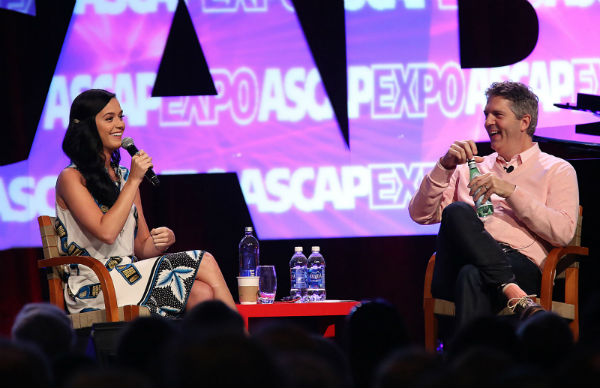Videos by American Songwriter
Greg Wells is best known for his work with pop singers like Katy Perry, Kelly Clarkston, and Adele. But, right now, he wants to talk about a different artist – someone few listeners in American will recognize.
“I love spreading the word about Mika,” Wells says about the British singer-songwriter who’s sold eight million records around the world but doesn’t get much airplay in the States. “He’s a huge superstar, [but] it’s not American enough. It’s a guy singing largely in falsetto.”
American pop fans will recognize these string of hits, though: Katy Perry’s “Pearl” and “Not Like The Movies” from Teenage Dream and “Waking Up In Vegas” and “Ur So Gay” from One Of The Boys. Wells produced and co-wrote those cuts from the L.A. pop diva, and he often also plays many of the instruments on the recordings.
But, until the end of the year, Wells’ attention will be focused on recording Mika’s third album. “He’s one of the best songwriters I’ve ever encountered. He writes in a very honest way,” says Wells. The dark subject matter of Mika’s songs coupled with its presentation in what Wells describes as a “Dr. Seuss celebratory way” is what drew the producer to him. (Kanye West is also a fan.)
But how did a minister’s son from Canada become one of the most sought-after producers in L.A.?
“Where I’m from, it’s a rural factory town. There is no entertainment industry anywhere near,” says Wells.
Wells was interested in music as a kid but really got the bug for recording when he was hired to play keyboards for the Canadian guitarist Kim Mitchell on the 1989 album, Rockland. Wells spent three weeks in a Toronto studio with producer Paul DeVilliers (Mr. Mister, Yes), who began training him on how to record and engineer records.
“He showed me how to mic the Leslie cabinet. Paul would get very tangential and start ranting and raving, which I found really exciting. He would show me what compression was. He’d take the drum track and show me how to make a Trevor Horn drum sound, or a Mutt Lange drum sound.”
Soon after, Wells scored a Canadian government grant to study with the composer and arranger Clare Fischer in L.A.
“I would go see him every week,” Wells recalls. “He had all these series of harmonic exercises that really felt like your brain was being stretched and pulled like it was making a loaf of bread.”
Wells describes one such exercise as walking through the circle of fifths on the piano where each hand was moving in an opposite different and in a different key.
“It would always get to the point where I would drive the car completely off the cliff. That was kind of [Fischer’s] point – to see how far he could push.”
Wells was inspired by Fischer’s strong personality and opinions and the maestro’s directness. He says he learned to open up and be more forthright as a musician and today those lessons help him to be a better producer. “I have become really direct. Every year I get more direct,” he says.
Wells writes and produces from what he considers a gut feeling. He says he’s not afraid to take risks, but he’ll be the first to admit when something’s not working.
“Empathy is the key,” he says. A producer should be a great communicator, understanding that it’s a frightening experience for an artist to turn over control to someone else during the writing or recording process.
For a guy prone to long philosophical discussions, who studied heady classical composition and arrangement but and who quotes both Stravinsky and Ron Howard during our conversation, it might seem odd he’s ended up a pop song guy.
“You’re confined by this very limited format. A three-and-a-half minute pop song is a very tiny little box to fit a story into,” he says. “Nobody really realizes, until you try to do it yourself, how hard it is to make something that’s really great.”













Leave a Reply
Only members can comment. Become a member. Already a member? Log in.